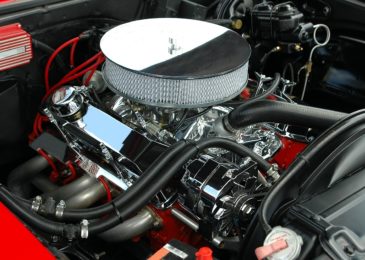The concept of automated driving is one that continues to shape the future of automotive innovation, while it has also been discussed in great detail over the course of the last few years. With an estimated 90% of all road accidents caused by human error and automotive carbon emissions placing a major strain on the environment, autonomous cars have been heralded as part of a safe and sustainable future global motorists.
The 5 Innovations that you may be missing out on as motorist
While the concept of driverless cars is far from becoming a reality, much of the technology required to achieve this already exists. Some of these innovations have already been incorporated into contemporary models, as brands continue to work on combining different technologies together to create a truly autonomous vehicle. For now, however, here are five of the cutting edge innovations that you may be missing out on as a motorist: –
- The emergence of in-car Mobile Platforms
While Google may be working on its own autonomous vehicle, it has also worked hard to incorporate its mobile Android platform into existing models. The same can be said for Apple, and 2016 will finally see the mobilisation of iOS and Android systems in cars across the globe.
Volvo, Ford and Vauxhall will all support one or both of these systems (with Android Auto currently being the most popular), for example, while those of you investing in a used car will easily be able to retrofit the technology and access smartphones apps while the move.
- Interaction between on-road cars for greater collaboration
Communication between vehicles is at the core of autonomous driving, and brands such as Volvo and BMW are all currently trialling systems that will see their cars interact with one another through NFC chips and integrated SIM cards. Referred to a talkative models, these next generation vehicles will interact with one another in real-time to identify potential traffic jams, hazards and obstructions before the human eye. This will ultimate create safer roads and help to negate the issues posed by congestion.
- Parking can now be completed by sensors
Parking is the bug-bear of many drivers, especially when trying to identify and fit into a spot within a congested area. This can also risk damage to your car, which is why innovative brands like Ford and Renault have already developed a system which targets available parking spaces before utilising sensors and smart cameras to guide the vehicle into position. This technology can be applied to both parallel and reverse parking spaces, meaning that humans are only required to provide throttle inputs.
This year, BMW will evolve this technology onto a whole new level by incorporating technology which leverages smartphone connectivity to achieve perfect parking results. Remote Control Parking is currently set to be made available on the 7 series (due for release next year), and will allow vehicles to autonomously reverse and pull out of spaces as required.
- Laser Technology is changing the modern headlight
The biggest issue with headlights is that they often illuminate while dazzling oncoming drivers, creating a significant hazard at night or in poor visibility. Audi’s use of lase technology in its high-end cars has changed this, however, creating automatic, high-beam assists that deliver optimal levels of lights without dazzling fellow motorists. 2016 will also see Volvo roll out it coveted ‘bending’ light technology, which automatically pivots individual lamps to illuminate more of the road ahead.
- Gesture control is becoming mainstream
The BMW 7 Series was responsible for first introducing us to gesture control, thanks to the use of a rear-view mounted, infrared camera that can identify and process hand gestures. These could then be used to control various infotainment functions, making it easier to handle a number of in-car tasks without being forced to deviate attention away from the road. This system is set to receive an upgrade in 2016, while other manufactures are likely to follow suit in the near future.






